A Roman Temple Under a Temple of High Technology
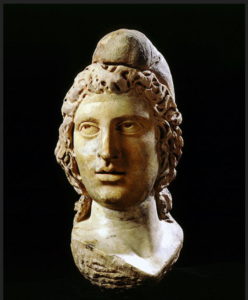
One of the most significant archaeological sites ever discovered in London is now open to the public beneath the stunning new European headquarters of media giant Bloomberg. Constructed around 240 CE, the Roman Temple of Mithras was discovered in 1954, when in the last hours of excavations for a new office block on a WW2 bomb site, the stone head of a handsome young god wearing its distinctive Phrygian cap was unearthed.
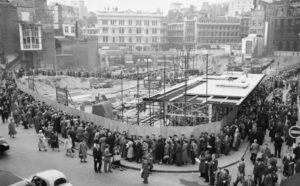
The find caused a sensation, with an estimated 400,000 people queuing to visit the uncovered remains. The then Prime Minister, Winston Churchill forced Legal & General to abandon plans to demolish the foundations to make way for their new building and grant an extension of 3 weeks to allow for further excavations to take place. After eight years languishing in a builder’s yard, in 1962 the salvaged stone blocks from the ruined temple walls were partially reconstructed some 100 meters from the original site. This reconstruction incorporated new stone brought in to fill in gaps, which was roundly condemned at the time by the archaeological and Classics cognoscenti.
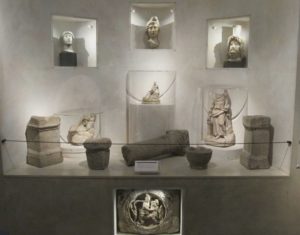
The stone head of Mithras, as well as other beautiful carvings found at the site, including a finely detailed bearded head of Serapis, and 3rd century marble images of Minerva and Mercury imported from Italy, went to the Museum of London. Other artefacts, such as original timber benches, were sadly thrown away. The 1962 re-display was generally regarded as one of the most disappointing tourist sites in London, with nothing to suggest the nature of the mystery cult of Mithras. Archaeologists dismissed the site as “meaningless”, and one newspaper declared that the site had all the mystery of a suburban front garden.
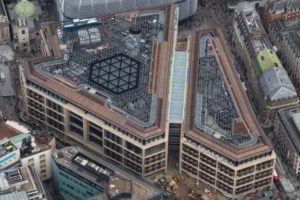
The Bloomberg SPACE, as it’s known, is the company’s European headquarters, and stands on one of the richest archaeological locations in London—by one estimate, a 10th of the Roman objects on display in the Museum of London come from a century of excavations on various pieces of land in this vicinity. The Mithraeum has been reinstated in its original location and lies beneath this building.
Much was destroyed by excavations for deep basements of numerous later buildings, although where archaeological layers have survived, the soggy ground has preserved a startling array of artefacts including hundreds of wooden tablets. These are regarded as the oldest handwritten documents ever found in Britain, dating from the first years after the Roman invasion, including the first recorded use of the word Londinium.
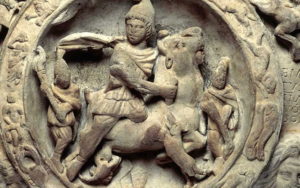
The cult of Mithras is still steeped in mystery as very few written records of it or its rites are available—there was no “Book of Mithras.” Originating in Persia, the cult was the most prominent of various oriental religious movements to be established in Britain and across the Roman world. It was a men-only cult, attracting members mostly from the military, probably due to the heroic legend of the young, virile god, who slew a primordial bull.
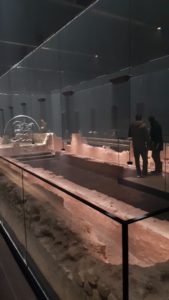
Ceremonies took place by the light of flaring torches in underground temples, where the blood of sacrificial animals seeped into the earthen floor—although given the size of the London Mithraeum, that is considered to have been unlikely.
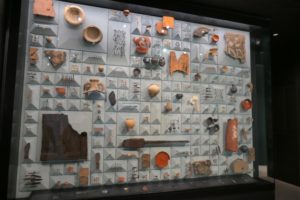
Today, the Mithraeum is open to the public, offering visitors an immersive experience that brings the world of Roman Londinium to life. The ground floor has an impressive display of many of the artefacts unearthed from the original site, the first of the lower levels has very informative digital images and videos, and finally, 7 meters below street level, is the Mithraeum itself. As you descend the staircase, lines on the walls indicate how you are passing the through the many historic later layers that make London such a rich source of historic artefacts. Entry is free, but bookings highly recommended as numbers are strictly limited.
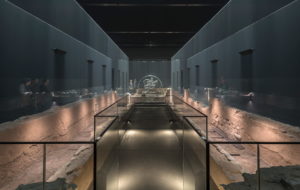
The reconstruction of the rites includes a soundtrack of shuffling sandaled feet and male voices chanting in Latin the names of the levels of initiates taken from graffiti on a temple in Rome—little else is known about the secretive rites. It’s suitably quite eerie and very atmospheric. The “reconstruction” of the temple volume is cleverly achieved by rows of lights beamed from the ceiling though a soft mist to indicate the alignment of the walls for visitors as they walk around the outer edge of the temple.
Michael Bloomberg has publicly stated that they were stewards of the ancient site and its artefacts. “London has a long history as a crossroads for culture and business, and we are building on that tradition.”
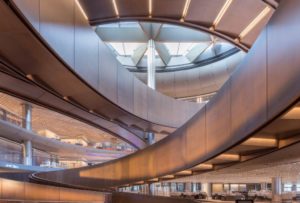
Designed by Lord Norman Foster, the Bloomberg SPACE occupies approx. 1.30 hectares, and was designed to push the boundaries of what an office building could be. It’s not “in your face” like some of its more flashy neighbours, rather, the scheme was intended to be respectful of its historic environment. “We were very conscious of being guests in London,” said Michael Bloomberg. “We wanted something perfectly modern and eminently British that respected London’s traditions.”
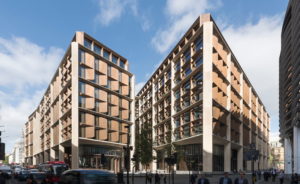
The façade is clad in the same Derbyshire sandstone as the adjacent Victorian magistrate’s court, and the height was limited to match that of its neighbours.
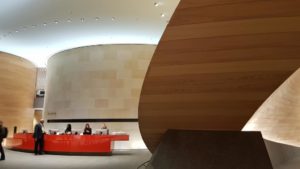
An important aim was to be the most sustainable office building in the world, with an innovative ventilation system that achieved a sustainability score of 98.50%, using 70% less water and 40% less energy than a typical office block, and huge bronze baffles, or panels, that Foster calls the “gills”, that open and close automatically, allowing the building to breathe.
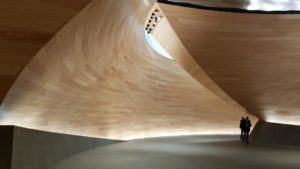
Aside from all these virtues however, the building is an outstanding piece of modern architecture with no expense spared on the quality of building materials, fittings and fixtures. Together, Bloomberg and Foster have created what purports to be the world’s most sustainable office building, and certainly one of the most expensive! Go into the vast foyer and admire the incredible interior space—it is absolutely breathtaking.
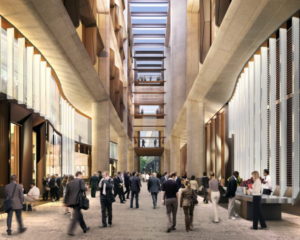
The covered pedestrian Bloomberg Arcade, which follows the old Roman road, has an interesting line-up of good restaurants including Kym’s, by Michelin-starred chef Andrew Wong, EKTE Nordic Kitchen, Brigadiers, serving classic Indian barbecue cuisine, a Tokyo-style noodle café, Koya, and the inevitable burger café. The Arcade celebrates the many small pedestrian passage ways that still remind the visitor of the medieval pedestrian character in this part of the City.
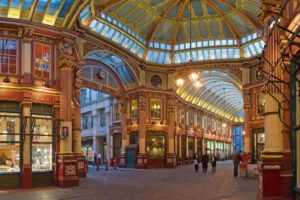
The famous Leadenhall Market, one of the great London arcades, is only a short walk away.
To round out a visit to this part of London, and by way of a complete contrast, head across the street from the Bloomberg SPACE. On Walbrook is a very beautiful church designed by Sir Christopher Wren that many experts regard as being the great architect’s London masterpiece.
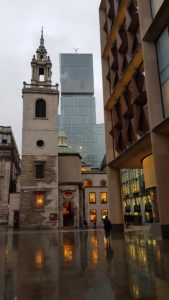
St Stephen Walbrook, which incorporates the name of one of the city’s “lost” rivers, was built between 1672-9 to replace a church that was destroyed during the Great Fire of London in 1666. The spire was added to the church between 1713 and 1715.
Its interior is rather unusual since the modern wooden pews are in a circle around a stone altar in the centre. The travertine altar itself is interesting, being a commission by the sculptor Henry Moore, installed in 1987. Centred above the central square of 12 Corinthian columns is an enormous dome.
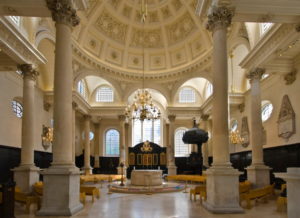
It’s thought that Wren modelled this dome on that within St Paul’s Cathedral, although there’s also a suggestion that Wren set out to create a scaled down imitation of the Pantheon in Rome. The interior is especially beautiful by candlelight and, naturally, is a favourite venue for Christmas carol services.
This is a fascinating part of the City of London that now has at least three good reasons to visit and perhaps rediscover.

